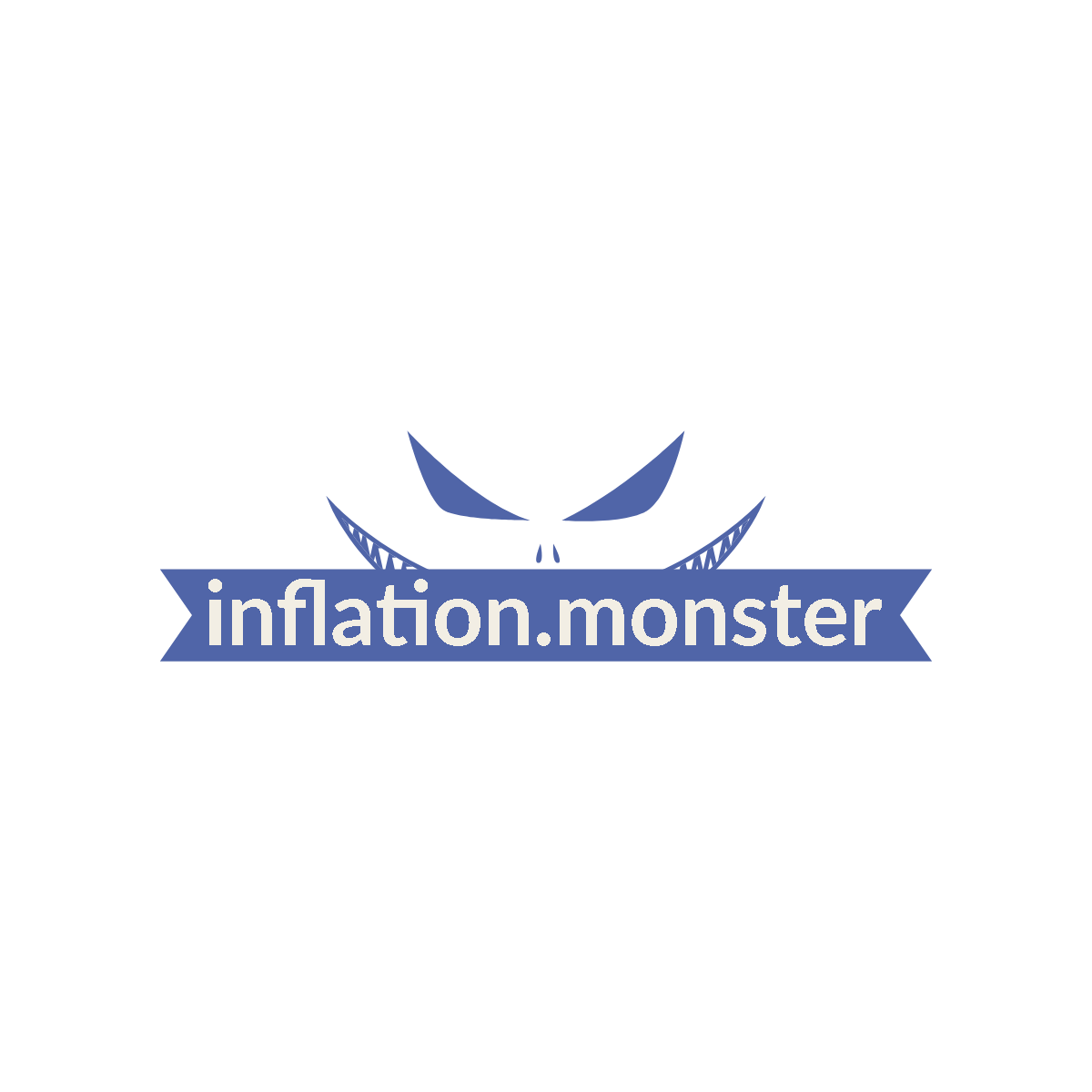Imagine a world where the price of everything you need keeps steadily rising, putting a never-ending strain on your finances. This is the reality of inflation, a concept that often feels elusive and overwhelming. But fear not, because here at Inflation.Monster, we are on a mission to demystify this economic beast and shed light on its impact on money and economics. Together, let’s navigate the treacherous waters of inflation as we explore the role of financial regulations in taming this monster. Brace yourselves for a deep dive into the intriguing world of hard money, inflation, and the ever-evolving landscape of financial regulations.

Understanding Inflation
Inflation is a term used to describe the overall increase in prices of goods and services in an economy over time. It is essentially a decrease in the purchasing power of money, as it takes more money to buy the same amount of goods or services. Inflation is measured through various indices, such as the Consumer Price Index (CPI) or the Wholesale Price Index (WPI), which track the average price changes of a basket of goods and services. Understanding inflation is crucial for economists, policymakers, and individuals to make informed decisions and mitigate its impact on various aspects of the economy.
Definition of Inflation
Inflation can be defined as a sustained increase in the general price level of goods and services in an economy over a period of time. This means that the same amount of money can buy fewer goods or services as time goes on. Inflation is typically expressed as an annual percentage increase in prices. A low and stable inflation rate is generally considered beneficial for economic growth, while high and volatile inflation rates can create economic instability and hinder long-term development.
Causes of Inflation
Inflation can have various causes, both internal and external to an economy. One common cause is an increase in aggregate demand, meaning that consumers and businesses are demanding more goods and services than the economy can produce. This excess demand puts upward pressure on prices. Another cause is cost-push inflation, which occurs when the cost of production, such as wages or raw materials, increases, leading firms to raise prices to maintain profit margins. Additionally, inflation can be fueled by monetary factors, such as an increase in the money supply or excessive government borrowing.
Types of Inflation
There are different types of inflation that can occur in an economy, depending on the underlying causes. Demand-pull inflation is caused by excessive aggregate demand, resulting in a shortage of goods and services and an increase in prices. Cost-push inflation, on the other hand, is driven by rising production costs that lead to higher prices. Inflation can also be categorized as anticipated or unanticipated. Anticipated inflation occurs when people adjust their expectations of future price increases and factor them into their decision-making. Unanticipated inflation refers to a situation where people are caught off guard by sudden price increases, which can have disruptive effects on the economy.
Impact of Inflation on Economy
Inflation has several significant impacts on the economy, affecting various aspects of individuals’ lives and overall economic performance.
Purchasing Power
One of the most immediate impacts of inflation is the erosion of purchasing power. As prices rise, the same amount of money can buy fewer goods and services. This can have a detrimental effect on consumers, as their standard of living may decrease if their income does not keep pace with inflation. Higher inflation rates can also lead to increased inequality, as those with fixed incomes or low wages may struggle to afford essential goods and services.
Interest Rates
Inflation has a direct relationship with interest rates. As inflation increases, central banks often respond by raising interest rates to curb spending and reduce demand. Higher interest rates make borrowing more expensive, leading to decreased consumer and business spending. This can slow down economic growth and investment. On the other hand, in times of low inflation or deflation, central banks may lower interest rates to stimulate borrowing and spending, thereby boosting economic activity.
Income Distribution
Inflation can also have an impact on income distribution within an economy. Those with fixed incomes, such as pensioners or low-wage workers, often bear the brunt of rising prices, as their purchasing power declines. Conversely, individuals with assets, such as real estate or stocks, may benefit from inflation, as the value of these assets tends to rise with prices. This can widen the wealth gap and exacerbate inequality within society.

Role of Financial Regulations in Inflation Control
Financial regulations play a crucial role in managing and controlling inflation within an economy. These regulations are implemented by governmental and non-governmental bodies to monitor and regulate various aspects of the financial system, including monetary policy, money supply, and interest rates.
Monitoring Monetary Policy
One of the key roles of financial regulations is to monitor and evaluate the effectiveness of monetary policy in controlling inflation. Central banks, such as the Federal Reserve in the United States or the European Central Bank in Europe, are responsible for formulating and implementing monetary policy. Financial regulations ensure that these central banks have the necessary tools and frameworks in place to monitor and adjust monetary policy according to prevailing economic conditions.
Controlling Money Supply
Financial regulations also play a crucial role in controlling the money supply within an economy. Excessive money supply growth can fuel inflationary pressures by increasing aggregate demand. Through various regulatory measures, such as reserve requirements or open market operations, financial regulators can enforce controls on the creation and circulation of money within the economy.
Regulating Interest Rates
Interest rates are a critical tool in managing inflation. By raising or lowering interest rates, central banks can influence borrowing costs and, in turn, consumer and business spending. Financial regulations help establish the framework for setting and adjusting interest rates, ensuring that they remain in line with inflation targets and overall economic stability.
Government Intervention in Financial Markets
In addition to financial regulations, governments also intervene in financial markets to manage inflation and ensure economic stability. Government intervention can take various forms, including the actions of central banks, fiscal policy measures, and the implementation of price controls.
Central Banks
Central banks, as mentioned earlier, play a vital role in managing inflation through monetary policy. These institutions are typically independent from the government but are accountable for maintaining price stability and economic growth. Central banks have the authority to set interest rates, control money supply, and manage the overall stability of the financial system.
Fiscal Policy
Fiscal policy, controlled by the government, involves the use of taxes, government spending, and borrowing to influence the economy. Governments can implement expansionary fiscal policies, such as increasing spending or cutting taxes, to stimulate economic growth during periods of low inflation or recession. Conversely, contractionary fiscal policies, including reducing spending or raising taxes, can be used to cool down an overheating economy and control inflation.
Price Controls
In certain cases, governments may resort to implementing price controls to regulate inflation. Price controls involve setting maximum or minimum prices for certain goods or services. While these measures may be intended to protect consumers, they can have unintended consequences, such as shortages or black market activities. Therefore, the effectiveness and appropriateness of price controls in managing inflation are often subject to debate among economists and policymakers.

Historical Examples of Inflation and Regulations
To better understand the role of financial regulations in managing inflation, let us examine some historical examples where inflation had a significant impact on economies and the subsequent regulations implemented to address the issue.
The Great Inflation of the 1970s
The 1970s witnessed a period of high inflation rates in many advanced economies, including the United States. This phenomenon, known as the Great Inflation, was primarily caused by a combination of factors, including excessive government spending, rising oil prices, and wage-price spirals. In response, central banks, such as the Federal Reserve, implemented tight monetary policies and raised interest rates to combat inflation. These measures, coupled with fiscal restraint and increased regulation, eventually brought inflation under control.
Hyperinflation in Zimbabwe
Zimbabwe experienced a severe case of hyperinflation in the late 2000s, with inflation rates reaching astronomical levels of several million percent per month. The causes of hyperinflation in Zimbabwe were multifaceted, including excessive money printing to finance government spending, political and economic mismanagement, and international sanctions. In an attempt to bring stability, the Reserve Bank of Zimbabwe introduced new currency denominations and implemented stringent financial regulations. Eventually, stabilization measures, such as dollarization and the introduction of a new currency, helped curb hyperinflation and restore some level of economic stability.
The Effects of Financial Deregulation
During the late 20th century, many economies embarked on a process of financial deregulation, aiming to increase market efficiency and stimulate economic growth. However, the unintended consequences of financial deregulation, such as the subprime mortgage crisis in 2008, highlighted the importance of strong financial regulations in managing inflation and ensuring stability. In response to the financial crisis, governments and regulatory bodies implemented stricter regulations on banks and financial institutions to prevent future systemic risks and control inflationary pressures.
Challenges in Implementing Effective Financial Regulations
Implementing effective financial regulations to manage inflation is not without challenges. Several key factors must be considered to strike the right balance between economic growth and stability.
Balancing Economic Growth and Stability
One of the primary challenges in implementing financial regulations is finding the delicate equilibrium between promoting economic growth and maintaining price stability. Overly strict regulations can hinder entrepreneurship and innovation, potentially stifling economic growth. On the other hand, inadequate regulations may allow excessive risk-taking and speculative activities that can contribute to inflationary pressures and financial instability.
Controlling Speculation
Financial markets are prone to speculation, which can exacerbate inflationary pressures or create bubbles in asset prices. Regulators must develop effective measures to control speculation, such as imposing limits on risky financial products or implementing measures to prevent market manipulation. Finding the right balance between allowing market forces to operate and curbing excessive speculation is a continual challenge for financial regulators.
International Cooperation
In an increasingly interconnected global economy, managing inflation and financial stability requires international cooperation. Financial regulations and policies implemented in one country can have spillover effects on other economies. Therefore, coordinated efforts among countries and regulatory bodies are essential to address global inflationary pressures and prevent the propagation of financial crises.
Future of Financial Regulations and Inflation
The future of financial regulations and inflation management is influenced by various factors, including technological advancements, globalization, and sustainable economic policies.
Technological Advancements
Technological advancements, such as blockchain and artificial intelligence, are reshaping the financial landscape and necessitate the adaptation of financial regulations. These advancements have the potential to increase efficiency, transparency, and accountability in financial systems, enabling regulators to better monitor and control inflationary pressures. However, they also pose new challenges, such as cybersecurity risks and the need for enhanced regulatory frameworks to govern emerging technologies.
Globalization
Globalization has expanded the interconnectedness of economies, making it imperative for financial regulations to be harmonized and coordinated. International cooperation and coordination among regulatory bodies are crucial to manage inflation on a global scale. As economies become more integrated, financial regulations need to adapt to ensure consistency and effectiveness in tackling inflationary pressures.
Sustainable Economic Policies
Sustainability has become a critical consideration in economic policymaking. As societies become more conscious of environmental and social impacts, financial regulations need to promote sustainable economic practices and ensure long-term stability. For instance, regulations that encourage investments in renewable energy or incentivize companies to adopt sustainable business models can contribute to both economic growth and low inflation.
Role of Central Banks in Inflation Management
Central banks play a pivotal role in managing inflation and controlling monetary conditions within an economy. They employ various tools and strategies to achieve their inflation targets and maintain overall economic stability.
Tools and Strategies
Central banks utilize multiple tools to manage inflation. These include setting interest rates, conducting open market operations, and adjusting reserve requirements. By raising or lowering interest rates, central banks can influence borrowing costs and spending levels. Open market operations involve buying or selling government bonds to control the money supply. Reserve requirements determine the amount of money that banks are required to hold as reserves, affecting the amount of money available for lending. These tools, when used effectively, can help central banks manage inflation and overall economic conditions.
Independence vs. Government Control
The degree of independence of central banks is a subject of debate in economic and political circles. While some argue for complete independence, others advocate for more government control. Independence allows central banks to stay focused on long-term goals, such as price stability, without political interference. However, there is a need for checks and balances to ensure transparency, accountability, and alignment with broader economic objectives.
Central Bank Communication
Effective communication is crucial for central banks to manage inflation expectations and maintain credibility. Clear and transparent communication about future monetary policy decisions helps guide market participants and citizens’ behavior. By providing guidance on inflation targets and policy actions, central banks can enhance the effectiveness of their inflation management strategies and reduce uncertainty in the financial markets.
The Role of Government in Inflation Control
While central banks have a significant role in managing inflation, governments also play a crucial part in controlling inflation through fiscal responsibility, debt management, and consideration of political factors.
Fiscal Responsibility
Governments have the responsibility to maintain fiscal discipline and avoid excessive spending that can contribute to inflationary pressures. This involves adopting a prudent approach to budgeting, managing public debt, and ensuring that fiscal policies are aligned with long-term economic goals. By implementing responsible fiscal policies, governments can help create a stable macroeconomic environment and reduce the risk of inflation.
Debt Management
Effective management of public debt is essential in controlling inflation. High levels of government debt can exert upward pressure on interest rates, leading to increased borrowing costs and inflationary pressures. Governments need to develop strategies to manage and reduce debt levels to maintain fiscal stability and prevent inflationary risks.
Political Factors
Political factors can have a significant impact on inflationary pressures. Populist policies or electoral cycles may influence governments to implement expansionary fiscal policies or suppress interest rates, which can fuel inflation. It is crucial for governments to maintain a long-term perspective and consider the economic consequences of political decisions when formulating and implementing policies to control inflation.
The Role of Financial Institutions in Inflation Control
Financial institutions play a vital role in implementing financial regulations and contributing to inflation control through various measures, including financial stability measures, risk management, and consumer protection.
Financial Stability Measures
Financial institutions are responsible for maintaining stability within the financial system, which is essential for controlling inflation. By adhering to prudent lending practices, managing risks effectively, and maintaining sufficient capital buffers, financial institutions can help prevent excessive credit growth and the buildup of systemic risks that can lead to inflationary pressures. Close cooperation and communication between financial institutions and regulators are crucial for ensuring financial stability.
Risk Management
Effective risk management by financial institutions is instrumental in controlling inflation. By conducting rigorous risk assessments, diversifying portfolios, and implementing robust risk management frameworks, financial institutions can mitigate potential risks that can contribute to inflationary pressures. By actively monitoring and managing market, credit, and operational risks, financial institutions can contribute to a stable and resilient financial system.
Consumer Protection
Consumer protection is an important aspect of financial regulation to ensure fair and transparent practices and prevent exploitative behavior that can contribute to inflation. Financial institutions need to adhere to regulations that promote consumer rights, such as providing clear and accurate information, fair pricing, and ethical conduct. By protecting consumers from deceptive or predatory practices, financial institutions contribute to market efficiency and overall economic stability.
In conclusion, understanding inflation is crucial for individuals, economists, and policymakers. Financial regulations play a significant role in managing and controlling inflation in an economy. By monitoring monetary policy, controlling money supply, and regulating interest rates, financial regulations help mitigate the impact of inflation on various aspects of the economy. Government intervention, through central banks, fiscal policies, and price controls, also contributes to inflation control. Historical examples highlight the importance of effective financial regulations in managing inflation. Challenges in implementing financial regulations include balancing economic growth and stability, controlling speculation, and promoting international cooperation. The future of financial regulations and inflation management will be influenced by technological advancements, globalization, and sustainable economic policies. Central banks play a vital role in inflation management through various tools and strategies, while governments ensure fiscal responsibility, debt management, and consider political factors. Financial institutions contribute to inflation control through financial stability measures, risk management, and consumer protection. By collectively addressing these aspects, policymakers and regulators can effectively manage inflation and promote economic stability.




